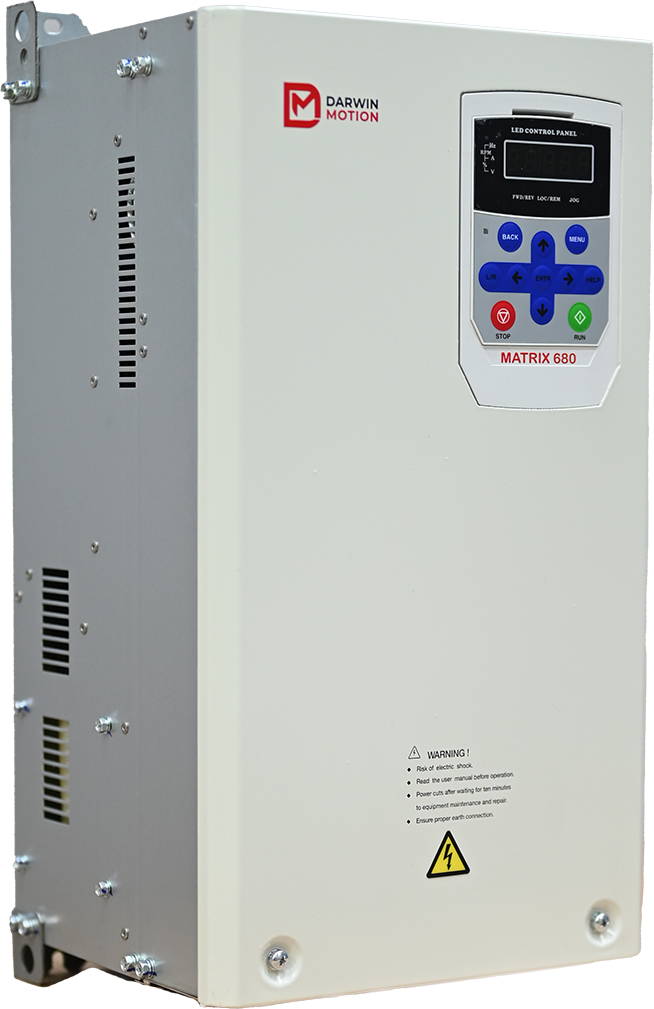Posted on 19th Mar 2025

Variable Frequency Drives (VFDs) are essential components in modern industrial and commercial applications, enabling precise motor control, energy savings, and improved system efficiency. Darwin Motion VFD, known for their reliability and advanced control features, require proper maintenance to ensure longevity and optimal performance. This article explores key maintenance practices for Darwin Motion VFDs, helping users maximize their investment and avoid costly downtime.
Proper maintenance of VFDs ensures:
Extended Equipment Lifespan: Prevents premature failures and enhances durability.
Consistent Performance: Reduces operational inefficiencies and fluctuations in motor speed control.
Minimized Downtime: Helps prevent unexpected failures that can disrupt production.
Energy Efficiency: Ensures optimal power usage and reduced operational costs.
Dust, dirt, and other contaminants can accumulate inside the VFD, leading to overheating and component degradation. Regularly inspect and clean the drive’s cooling fans, heat sinks, and ventilation paths to prevent dust buildup.
Ensure the VFD is operating within the specified environmental conditions, including:
Ambient Temperature: Keep within the manufacturer’s recommended range.
Humidity Levels: Avoid excessive moisture to prevent electrical failures.
Ventilation: Ensure adequate airflow around the unit to dissipate heat effectively.
Loose or corroded connections can lead to voltage fluctuations and drive failures. Periodically inspect power and control wiring, tightening any loose terminals and checking for signs of wear or corrosion.
Darwin Motion regularly releases firmware updates to enhance performance and fix potential bugs. Keeping the VFD firmware and software up to date ensures optimal functionality and access to the latest features.
VFDs provide diagnostic error codes that indicate potential issues. Regularly checking and addressing these codes can prevent minor problems from escalating into major failures.
Overheating is a common cause of VFD failure. Ensure that cooling fans are functioning correctly and that heat sinks are free from obstructions to maintain proper thermal management.
Capacitors degrade over time, impacting VFD efficiency. Periodic testing and replacement of capacitors and relays ensure continued performance and prevent unexpected failures.
Running periodic load tests ensures the VFD is performing optimally under different operating conditions. This practice helps identify potential issues before they lead to system failures.
Keep Maintenance Records: Document inspections, repairs, and software updates for future reference.
Train Personnel: Ensure operators and maintenance staff are familiar with VFD operation and troubleshooting procedures.
Use Quality Replacement Parts: Always use manufacturer-approved components to maintain drive integrity.
Schedule Preventive Maintenance: Regular maintenance checks help avoid costly emergency repairs.
Proper maintenance of Darwin Motion Variable Frequency Drives is essential to ensure long-term reliability, energy efficiency, and uninterrupted operation. By following these best practices, businesses can maximize the lifespan of their VFDs, reduce downtime, and enhance overall system performance. Regular inspections, environmental monitoring, firmware updates, and routine testing are key elements of an effective VFD maintenance strategy. Investing in preventive maintenance today will result in significant cost savings and operational efficiency in the long run.